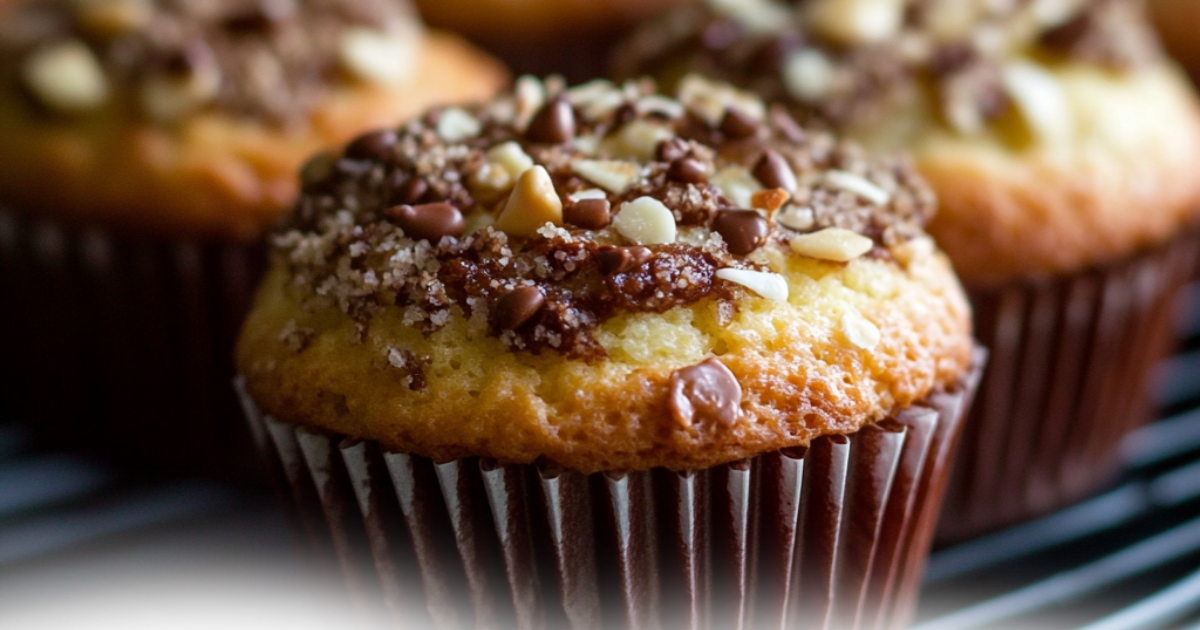Creating moist muffins is often the pinnacle of baking success. Many bakers ask, “What is the secret to moist muffins?” The answer lies in understanding the interplay of ingredients, mixing techniques, and baking practices. This article unveils the crucial steps and strategies to ensure your muffins are perfectly tender and moist, avoiding common pitfalls that lead to dryness. By mastering these elements, you can consistently produce delightful muffins that are a hit with everyone.
Table of contents
Essential Ingredients: What Determines Moisture in Muffins?
The choice of ingredients significantly affects the moisture content of muffins. “What is the secret to moist muffins?” often starts with the selection of the right components. Key ingredients include:
- Buttermilk or yogurt: These add richness and tenderize the dough.
- Brown sugar: Retains more moisture than white sugar due to its molasses content.
- Eggs: Provide structure and stability while also contributing to the moist texture.

By carefully choosing ingredients that naturally promote moisture, you can greatly improve the texture of your muffins. For further insights, explore Banana Muffins No Egg
The Role of Fats: A Deep Dive into Fats for Moist Muffins
Fats play a critical role in achieving moist muffins. “What is the secret to moist muffins?” cannot be answered without highlighting the importance of butter, oils, and other fats. Fats coat the flour’s gluten proteins, preventing them from forming a firm network, which results in a softer, more tender crumb. Options include:
- Unsalted butter for a rich flavor.
- Vegetable oils for a lighter texture.
- Coconut oil for a hint of sweetness.

Incorporating the right amount of fat ensures that your muffins stay moist longer. Check out how you can use bananas as an egg substitute in muffins for creative alternatives.
Using Dairy to Unlock the Secret to Moist Muffin Texture
Dairy products are pivotal in answering the query, “What is the secret to moist muffins?” They contribute not only to the moisture but also to the richness and flavor of the muffins. Ingredients such as sour cream, yogurt, and buttermilk make the muffin batter more pliable and moist. These additions can transform the texture of your baked goods from good to great.
Mixing Techniques for Perfect Muffins
Effective mixing techniques are essential. “What is the secret to moist muffins?” often includes mastering the method of combining your ingredients. Over-mixing the batter develops the gluten too much, leading to tough muffins. Instead, gently fold your wet and dry ingredients together until just combined; some lumps should remain. This approach is crucial for keeping the texture light and moist.

The Importance of Undermixing
Undermixing might sound like a negative, but when it comes to muffins, it is a strategy. “What is the secret to moist muffins?” frequently involves doing less. Undermixing helps prevent the development of gluten strands, leading to a tender, moist bake. Aim to mix until the ingredients are just incorporated, which typically means stopping before you think the batter is completely smooth.
Optimal Baking Practices for Moisture
The baking process itself is vital. “What is the secret to moist muffins?” includes not only how you prepare the batter but how you bake it. Some key practices are:
- Avoid overbaking: Set your timer a few minutes less than the recipe suggests, as muffins continue to cook slightly once removed from the oven.
- Use an oven thermometer: To ensure accurate baking temperatures.

Adhering to these practices can significantly impact the moisture content of your muffins.
Temperature Control During Baking
Maintaining the correct temperature is critical for moist muffins. “What is the secret to moist muffins?” often depends on how well the baking temperature is controlled. Too high a temperature can cause the muffins to peak and crack, losing moisture, while too low a temperature can result in dense, undercooked muffins. A steady middle-range temperature is ideal for that perfect rise and texture.
Cooling Muffins: Best Practices
Why does how you cool your muffins affect their moisture? The key to keeping them moist begins as soon as they come out of the oven. Cooling muffins improperly can cause them to become dry or rubbery. To avoid this, transfer your muffins from the baking tin to a cooling rack within five to ten minutes. This prevents the steam from condensing, which might otherwise make the bottoms soggy. Additionally, covering them lightly with a clean cloth while they cool helps retain just enough moisture without making the tops too soft.
Creative Add-Ins for Extra Moisture
Thinking of ways to add that extra bit of moisture to your muffins? Consider these ingredients:
- Yogurt: Introduces creaminess and binds the batter.
- Applesauce: A healthy substitute for oil that naturally enhances moisture.
- Sour cream: Adds richness and tenderizes the batter. By incorporating these ingredients, you’re not only boosting the moisture content but also adding new dimensions of flavor to your muffins.
Using Fruits and Vegetables for Moisture
Incorporating fruits and vegetables into your muffin recipes is an effective strategy to keep them moist. Items like zucchini, bananas, and pumpkins not only contribute natural sweetness but also lend their moisture to the batter. This ensures your muffins stay deliciously tender. For best results, grate or mash these additions well to distribute their moisture evenly throughout the batter.
Avoiding Common Muffin Baking Mistakes
Several common errors can lead to dry, disappointing muffins. Overmixing the batter develops the gluten excessively, making the texture tough. Also, filling the muffin cups too much or too little can impact how they bake. Aim for filling each cup about three-quarters full for optimal rise and moisture. Remember, a gentle hand and a watchful eye during preparation and baking can make all the difference.
The Effects of Overbaking
Overbaking is often the culprit behind dry muffins. To ensure your muffins remain moist, check them a few minutes before the recipe’s suggested baking time ends. They are done when a toothpick inserted into the center comes out clean or with a few moist crumbs. Removing muffins from the oven at the right time is crucial to maintaining their ideal texture.
Advanced Tips for Moist Muffins
Enhancing your muffins to achieve the best moisture and texture involves more than just following a recipe:
- Lower baking temperature can help cook muffins evenly, preventing a dry texture.
- Using brown sugar or honey as part of the sweeteners can draw more moisture into the batter. Implement these techniques next time you bake, and notice the difference in your muffins’ quality.
FAQs About Making Moist Muffins
What is the best flour to use for moist muffins?
All-purpose flour works well for most recipes, but for extra moisture, you can mix it with almond or whole wheat pastry flour, which provides a softer texture.
Can I use oil instead of butter for moist muffins?
Yes, oil (such as vegetable, coconut, or canola oil) can make muffins moister than butter, as it remains liquid at room temperature and doesn’t harden like butter.
Should I soak dried fruits before adding them to muffin
Yes, soaking dried fruits in water, juice, or even a flavored syrup for 10–15 minutes can prevent them from absorbing moisture from the muffin batter, ensuring the final product remains moist.
How can I tell if my muffins are overbaked
Overbaked muffins will feel dry or tough when pressed gently on the top. Use the toothpick test: muffins are done when the toothpick comes out with a few moist crumbs, not entirely dry.
What role does sugar play in moist muffins?
Sugar helps retain moisture in baked goods. Brown sugar is particularly effective due to its molasses content, which adds both moisture and a richer flavor.
Can I use frozen fruits in my muffin batter?
Yes, frozen fruits work well, but they should be added straight from the freezer to prevent bleeding into the batter. Coat them lightly in flour to stop them from sinking.
How do I store muffins to keep them moist?
Store muffins in an airtight container lined with a paper towel to absorb excess moisture. Adding a slice of bread inside the container can also help keep them soft.
Is it possible to make moist muffins without eggs?
Yes, substitutes like bananas, applesauce, yogurt, or flaxseed meal mixed with water can replace eggs while maintaining moisture in the muffins.
Does resting the batter before baking make muffins moister?
Yes, letting the batter rest for about 10–20 minutes allows the flour to fully hydrate, resulting in a softer, more tender crumb.
Can I add milk instead of water for extra moisture?
Yes, substituting milk (or a dairy-free alternative) for water enhances the flavor and moisture content of the muffins.
Conclusion: Perfecting Your Muffin Recipe
Achieving moist muffins doesn’t have to be a secret. By understanding the importance of ingredients, mixing techniques, baking times, and cooling methods, you can perfect your muffin recipe. Experiment with flavors and add-ins to bring not only moisture but also exciting twists to your creations. Start with these tips, and soon, your muffins will be the highlight of any gathering.

